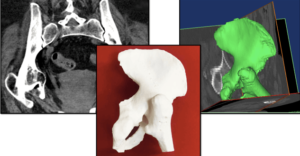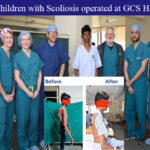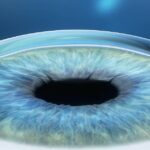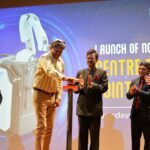3D Printing is revolutionizing the Orthopedics treatment module. 3D Printed models is becoming highly precise deformity correction treatment method.


More often it has been seen in cases where patients undergoing fractures in the foot and ankle usually have deformed structure post treatment. Such corrections may not have any severe impact on their quality of life, but once the deformity occurs, it seems to be an irreversible damage. Now with the revolutionizing technology, the deformities can be corrected with high accuracy and precision. Generating a pre-model of even the most complex structures, the surgeons can better analyze the anatomy through surgical simulation and plan their surgeries for better outcomes.
As the complete anatomy of the foot and ankle can be deeply studied, irrespective of the presence of patient, surgeons get ample time to predict the angle of deformity to be corrected with high accuracy. Being cost effective such technologies are gaining importance gradually across the country.


What is 3D Printing?
Three-dimensional (3D) printing is a manufacturing method in which objects are made by fusing or depositing materials—such as plastic, metal, ceramics, powders, liquids, or even living cells—in layers to produce a 3D object. 3D printing is expected to revolutionize medicine and other fields.
There are about two dozen 3D printing processes, which use varying printer technologies, speeds, and resolutions, and hundreds of materials. These technologies can build a 3D object in almost any shape imaginable as defined in a computer-aided design (CAD) file. It is important to note that two-dimensional (2D) radiographic images, such as x-rays, magnetic resonance imaging (MRI), or computerized tomography (CT) scans, can be converted to digital 3D print files, allowing the creation of complex, customized anatomical and medical structures
Diversity in 3D Printing:
3D printing has made a huge difference in the field of medical science. Usually this method is popular in planning of heart operation, spine and other orthopedic procedure. As this has nothing to do with the patient’s body during surgery there are no ill effects on them. Any organ or tissue can be made in nearly any imaginable geometry through the translation of x-ray, MRI, or CT scans into digital .stl 3D print files. In this way, 3D printing has been used successfully in the health care sector to make both standard and complex customized prosthetic limbs and surgical implants, sometimes within hours.


In the upcoming days, this itself will grow and develop with more advanced 3D models along with functional models where materials are more like the organs. Functional models along with organ like material could help us understand the diagnosis much better.
Advantages over traditional method:
3D bio printing offers additional important advantages beyond this traditional regenerative method
- Customization and Personalization – The greatest advantage that 3D printers provide in medical applications is the freedom to produce custom-made medical products and equipment. Custom-made implants, fixtures, and surgical tools can have a positive impact in terms of the time required for surgery, patient recovery time, and the success of the surgery.
- Increased Cost Efficiency -Another important benefit offered by 3D printing is the ability to produce items cheaply. The cost depends on the material used for printing, but it is cost efficient than other methods of treatment. Prior to this method, CT, MRI and X-rays on a plate were used which only portrayed 2 D model. Traditional manufacturing methods remain less expensive for large-scale production; however, the cost of 3D printing is becoming more and more competitive for small production runs. The cost to custom-print a 3D object is minimal, with the first item being as inexpensive as the last. 3D printing can also reduce manufacturing costs by decreasing the use of unnecessary resources.
- Enhanced Productivity – Fast in 3D printing means that product can be made within hours. That makes 3D printing technology much faster than traditional methods of making items which require milling, forging, and a long delivery time. In addition to speed, other qualities, such as the resolution, accuracy, reliability, and repeatability of 3D printing technologies, are also improving.


Dr Pradeep Moonot,Orthopaedic Surgeon & Podiatrist
Mumbai Knee Foot and Ankle Clinic, Bandra West, Mumbai- 400050
Mobile : +91 9869465597
Email : drmoonot@gmail.com












